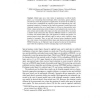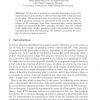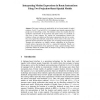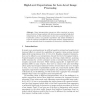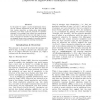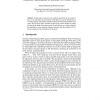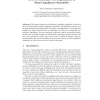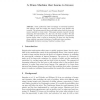KI
2008
Springer
13 years 11 months ago
2008
Springer
Abstract. Modal logics see a wide variety of applications in artificial intelligence, e.g. in reasoning about knowledge, belief, uncertainty, agency, defaults, and relevance. From ...
KI
2008
Springer
13 years 11 months ago
2008
Springer
We describe a method for cascading Description Logic (DL) representation and reasoning on the one hand, and HTN action planning on the other. The planning domain description as wel...
KI
2008
Springer
13 years 11 months ago
2008
Springer
Abstract. This paper investigates symbolic heuristic search with BDDs for solving domain-independent action planning problems cost-optimally. By distributimpact of operators that t...
KI
2008
Springer
13 years 11 months ago
2008
Springer
This paper explores the applicability of two formal models of spatial relations, Double Cross and RfDL3-12, to interpret some typical expressions that people use for describing a r...
KI
2008
Springer
13 years 11 months ago
2008
Springer
Abstract. Scene interpretation systems are often conceived as extensions of low-level image analysis with bottom-up processing for high-level interpretations. In this contribution ...
KI
2008
Springer
13 years 11 months ago
2008
Springer
In this paper we suggest a typed compositional semantics for nominal compounds of the form [Adj Noun] that models adjectives as higher-order polymorphic functions, and where types...
KI
2008
Springer
13 years 11 months ago
2008
Springer
Abstract. In this paper we present a new symbolic algorithm for the classification, i. e. the calculation of the rewards for both players in case of optimal play, of two-player gam...
KI
2008
Springer
13 years 11 months ago
2008
Springer
: This paper presents an evolutionary algorithm applicable to the task of device adjustment in smart appliances ensembles. The algorithm requires very little environmental knowledg...
KI
2008
Springer
13 years 11 months ago
2008
Springer
Abstract. The demand for humanoid robots as service robots for everyday life has increased during the last years. The processing power of the hardware and the development of comple...
KI
2008
Springer
13 years 11 months ago
2008
Springer
Music production relies increasingly on advanced hardware and software tools that makes the creative process more flexible and versatile. The advancement of these tools helps reduc...
